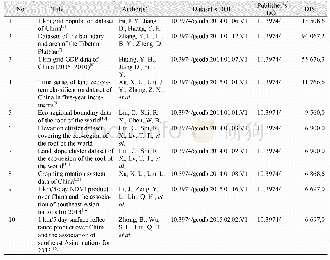《Table 3 Qualitative risk ranking of mercury in predaceous fish》
 提示:宽带有限、当前游客访问压缩模式
提示:宽带有限、当前游客访问压缩模式
本系列图表出处文件名:随高清版一同展现
《鱼贝类水产品甲基汞摄入风险评估的研究进展(英文)》
The general steps for risk assessment of fish and shellfish are shown in Fig.2[25].Pregnant women,especially pregnant women in their first trimester,are at high risk for methylmercury intake from aquatic products due to the negatively impact of methylmercury on normal fetal development.According to the allowable mercury intake of 0.7μg/kg body weight/week recommended by the US EPA and 5μg/kg body weight/week recommended by the Joint FAO/WHO Expert Committee on Food Additives(JECFA),the weekly limit of mercury intake from fish and shellfish for a 60-kg-weight pregnant in their first trimester is calculated and showed in Table 2.JECFA's limit is almost seven times that of EPA,but most countries use the JECFA's as standard.The expert committees of Food and Agriculture Organization(FAO)and World Health Organization(WHO)have developed quantitative measures of provisional tolerable weekly intake(PTWI)for food-borne mercury intake,suggesting that each person could tolerate 300μg total mercury or no more than 100μg methylmercury per week.This index is strict compared with the EPA index[1,2,4].To assess the extent of methylmercury intake based on fish and shellfish,the PTWI is used as a measure of methylmercury in this study.
| 图表编号 | XD0026683300 严禁用于非法目的 |
|---|---|
| 绘制时间 | 2018.02.01 |
| 作者 | 江津津、贾强、梁兰兰、林婉玲 |
| 绘制单位 | 广州城市职业学院食品系、广州城市职业学院食品系、广州城市职业学院食品系、中国水产科学院南海水产研究所 |
| 更多格式 | 高清、无水印(增值服务) |
查看“Table 3 Qualitative risk ranking of mercury in predaceous fish”的人还看了
-

- 续表3 两种干燥工艺下腌腊鱼游离氨基酸含量对比Continue table 3 Comparison of free amino acid content of salted fish in two drying processes
-

- Table 3 Multivariable analysis of risk factors for development of venous thromboembolism in patients with hepatic cirrho





